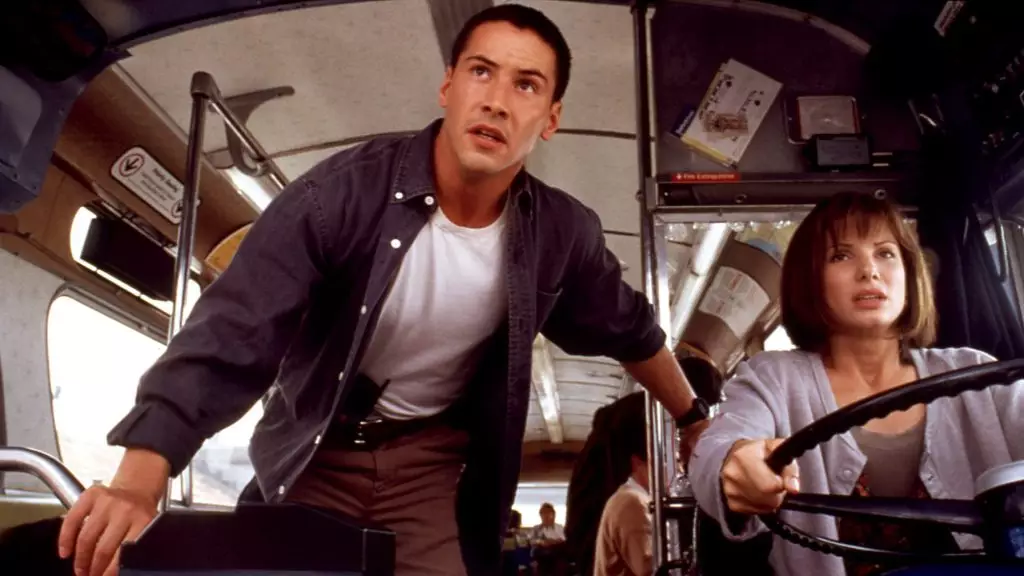As “Speed” celebrates its 30th anniversary, the iconic action film continues to resonate with fans and filmmakers alike. Released in 1994, the movie became an instant classic thanks to its high-octane sequences, compelling performances, and nail-biting premise. Keanu Reeves and Sandra Bullock, who starred in the film, recently gathered with director Jan de Bont at Beyond Fest to reflect on their experiences while filming. What emerged from their discussion were insights that not only humanized the actors but also highlighted the distinct challenges faced during the production of such a blockbuster.
During the event, Reeves reminisced about a particular scene where the bus crashes into cars—a sequence that felt less like acting and more like a real-life emergency. “Don’t you remember that day on the bus?” Reeves asked, prompting laughter and head nods from the audience. The danger and uncertainty of the stunt showcased a level of authenticity rarely seen in action films. It became evident that the cast was “a little under-informed,” providing a candid glimpse into the chaos that filmmakers often embrace for the sake of storytelling.
Bullock, who played Annie Porter, took a moment to express her theatrical qualifications humorously, revealing that she obtained a Santa Monica bus driver’s license for the role. Yet, paradoxically, she clarified that she never actually drove the bus on set. Instead, she was simply an actress at the still helm of the vehicle while a stunt driver maneuvered from the rooftop. This duality of her role emphasizes the skill and precision required in action filmmaking and the intricate choreography needed to pull off such stunts safely.
At the heart of “Speed” lies a gripping premise: a bus rigged with a bomb that will detonate if its speed drops below 50 mph. Reeves’ character, LAPD Officer Jack Traven, and Bullock’s Annie must navigate this life-threatening situation while maintaining composure under immense pressure. The film’s success can largely be attributed to its ability to keep audiences on the edge of their seats. The performances of a stellar supporting cast, including Dennis Hopper and Jeff Daniels, only amplified the film’s emotional weight.
Despite the excitement generated by “Speed,” its sequel—released in 1997 as “Speed 2: Cruise Control”—failed to capture the same magic, primarily due to the absence of Reeves. Bullock returned with a new romantic interest played by Jason Patric, but the film struggled to find an audience. This shift highlights the innate risks associated with sequels, particularly when original cast members are not involved.
In reflecting on the potential for another sequel, Bullock expressed her doubts, stating, “It would require a lot from everybody.” She emphasized that the film industry today might not be willing to take the necessary risks to recreate the magic of “Speed.” This revelation invites speculation about what defines the appetite for sequels in an evolving cinematic landscape. Would audiences respond positively to a return to this adrenaline-fueled world, or has the moment passed?
As we celebrate the legacy of “Speed,” it becomes increasingly clear that the film is more than just a collection of impressive stunts; it’s a journey filled with genuine peril, camaraderie, and innovation. Whether or not we ever return to that high-stakes ride, the experiences shared by its creators will forever contribute to its legendary status.

